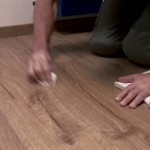White Tile Flooring Designs Ideas
White tile flooring presents a versatile and aesthetically pleasing option for a wide array of interior design styles. Its inherent brightness and neutrality contribute to a sense of spaciousness and cleanliness, making it a popular choice for both residential and commercial environments. The adaptability of white tile allows for seamless integration with various color palettes, textures, and architectural elements, providing designers and homeowners with considerable creative latitude.
The selection of white tile extends beyond a simple color choice, encompassing a multitude of materials, sizes, shapes, and finishes. This variety enables the creation of customized and visually compelling flooring designs that cater to specific functional requirements and aesthetic preferences. From minimalist modern interiors to classic and traditional settings, white tile flooring offers a foundation upon which to build a cohesive and stylish space.
Exploring Material Options for White Tile Flooring
The material composition of white tile flooring significantly impacts its durability, maintenance requirements, and overall aesthetic. Several materials are commonly used, each possessing unique characteristics that make them suitable for different applications.
Porcelain tile is a frequently chosen option due to its strength, water resistance, and versatility. It is manufactured using a high-temperature firing process, resulting in a dense and non-porous material. This characteristic makes porcelain tile highly resistant to staining, scratching, and moisture absorption, rendering it ideal for high-traffic areas and environments prone to spills, such as kitchens and bathrooms. White porcelain tile is available in a range of finishes, including polished, matte, and textured, allowing for customization based on the desired look and feel.
Ceramic tile is another widely used material for white flooring. While similar to porcelain tile, ceramic tile is generally less dense and more porous. It offers a cost-effective alternative to porcelain, making it a suitable choice for areas with moderate foot traffic. White ceramic tile is commonly used in residential settings, particularly in bathrooms and laundry rooms. It is important to note that ceramic tile may require more frequent sealing to prevent water damage and staining.
Natural stone tiles, such as marble and granite, offer a luxurious and sophisticated aesthetic. White marble tile, with its distinctive veining and natural variations, adds a touch of elegance to any space. However, natural stone tiles are typically more porous and require more diligent maintenance than porcelain or ceramic tiles. Regular sealing is essential to protect the surface from staining and etching. Granite, while generally more durable than marble, also benefits from periodic sealing to maintain its appearance.
Vinyl tile presents a resilient and affordable flooring option. White vinyl tile is available in a variety of styles, including planks and sheets, and is often designed to mimic the look of wood or stone. Vinyl tile is known for its water resistance, ease of installation, and comfort underfoot. It is a suitable choice for areas where durability and affordability are primary considerations, such as basements and playrooms.
Designing with Different Sizes and Shapes of White Tile
The size and shape of white tile flooring can dramatically influence the visual impact of a space. Careful consideration should be given to these factors to achieve the desired aesthetic and functional outcome.
Large-format tiles, typically exceeding 12 inches in size, create a sense of continuity and spaciousness. The reduced number of grout lines contributes to a cleaner and more modern appearance. Large white tiles are particularly effective in open-concept living areas and hallways, where they can visually expand the space. However, the installation of large-format tiles may require a more skilled installer to ensure proper leveling and alignment.
Small-format tiles, such as mosaics and subway tiles, offer a more intricate and detailed design. These tiles are often used to create patterns and visual interest, particularly in bathrooms and kitchens. White subway tiles, arranged in a classic brick pattern, are a timeless choice for backsplashes and shower walls. Mosaic tiles, with their diverse shapes and colors, allow for the creation of custom designs and artistic installations.
Square tiles provide a traditional and versatile option for white flooring. They can be arranged in a variety of patterns, including a simple grid, a diagonal layout, or a checkerboard design. The symmetrical nature of square tiles lends itself to both contemporary and classic interior styles. Rectangular tiles, often used to mimic the look of wood planks, offer a more elongated and linear aesthetic. These tiles are commonly used in hallways and entryways to guide the eye and create a sense of direction.
Hexagonal tiles have gained popularity in recent years, offering a unique and geometric design. White hexagonal tiles can be used to create a visually striking floor or wall covering. They are often used in bathrooms and kitchens to add a touch of modern flair. The irregular shape of hexagonal tiles can also be used to create interesting patterns and transitions between different flooring materials.
Exploring Design Styles and Applications for White Tile Flooring
White tile flooring is a versatile design element that can be incorporated into a wide range of interior styles. The choice of material, size, shape, and finish can significantly impact the overall aesthetic, allowing for customization and personalization.
In minimalist modern interiors, large-format white porcelain tiles with a matte finish create a clean and understated backdrop. The absence of excessive ornamentation and the emphasis on functionality contribute to a sense of serenity and spaciousness. Pairing white tile flooring with minimalist furniture and neutral color palettes enhances the overall sense of calm and order.
For classic and traditional settings, white marble tile with subtle veining adds a touch of elegance and sophistication. The natural variations in the marble create visual interest and depth. Pairing white marble flooring with traditional furniture, ornate details, and warm color palettes enhances the sense of timelessness and refinement.
In contemporary designs, white tile flooring can be used to create bold and graphic patterns. Combining different sizes and shapes of white tile, or incorporating contrasting grout colors, can add visual interest and personality. White tile flooring can also be used in conjunction with other materials, such as wood or metal, to create a dynamic and layered design.
White tile flooring is particularly well-suited for bathrooms, where its water resistance and ease of cleaning are highly beneficial. White tile can be used on the floor, walls, and even the shower enclosure to create a cohesive and visually appealing space. Incorporating white grout or contrasting grout colors can further enhance the design. In kitchens, white tile flooring is a practical and stylish choice. Its durability and resistance to stains make it ideal for high-traffic areas prone to spills. White tile can be paired with a variety of cabinet styles and countertop materials to create a custom kitchen design.
Beyond residential applications, white tile flooring is also commonly used in commercial environments. Its durability and ease of maintenance make it a suitable choice for retail stores, offices, and restaurants. White tile flooring can contribute to a clean and professional atmosphere, enhancing the overall customer experience. In healthcare facilities, white tile flooring is often used to promote hygiene and cleanliness.
The selection of grout color is also a critical consideration when designing with white tile. White grout creates a seamless and uniform appearance, further enhancing the sense of spaciousness. However, white grout can be more susceptible to staining and may require more frequent cleaning. Dark grout, such as gray or black, provides a contrasting look and highlights the shape and pattern of the tiles. Dark grout is also more resistant to staining and may require less maintenance. The choice of grout color should be carefully considered based on the desired aesthetic and the anticipated level of traffic and wear.

White Floor Tile Ideas For Your Modern Home Interior

Designing With White Tile On Suncoast View S Of America

White Marble Flooring Ideas For Any Style Budget Stone Tile Depot

Modern Floor Tiles Design Ideas 2024 3

6 White Floor Tile Design For A Simple And Elegant Home

White Kitchen Tiles Ideas Quorn Stone

20 Best 𝐊𝐢𝐭𝐜𝐡𝐞𝐧 𝐅𝐥𝐨𝐨𝐫 𝐓𝐢𝐥𝐞𝐬 𝐃𝐞𝐬𝐢𝐠𝐧 Ideas Beautiful S

Best Floor Tile Ideas Of 2024 So Far For Every Style Budget

180 Floor Tiles Ideas Design Marble Flooring Tile

12 Stunning Small Kitchen Floor Ideas For 2024 Nari
Related Posts








